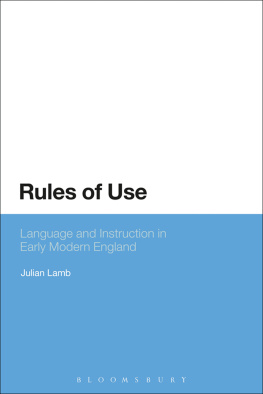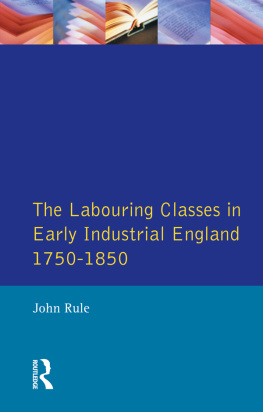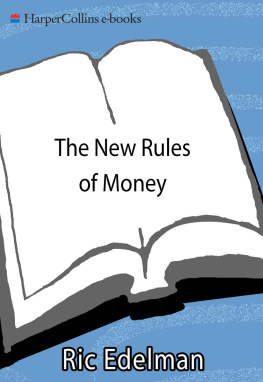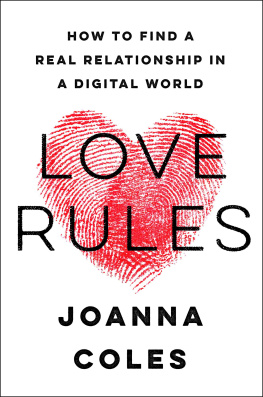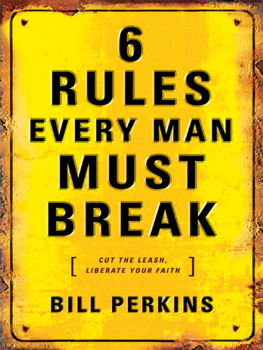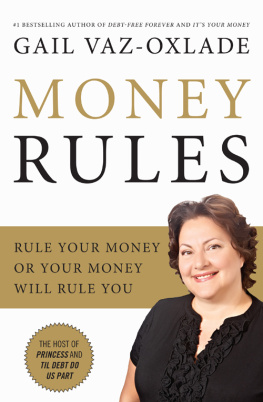Rules of Use
Also available from Bloomsbury
Applying Wittgenstein, Rupert Read, edited by Laura Cook
The Bloomsbury Companion to Historical Linguistics, edited by Silvia Luraghi and Vit Bubenik
The Bloomsbury Companion to the Philosophy of Language, Manuel Garcia-Carpintero and Max Kolbel
Corpus Linguistics and 17th Century Prostitution, Anthony McEnery and Helen Baker
Samuel Johnsons Dictionary, edited by Jack Lynch
Wittgensteins Philosophical Investigations: A Readers Guide, Arif Ahmed
Rules of Use
Language and Instruction in Early
Modern England
Julian Lamb

When they (my elders) named some object, and accordingly moved towards something, I saw this and I grasped that the thing was called by the sound they uttered when they meant to point it out. Their intention was shown by their bodily movements, as it were the natural language of all peoples; the expression of the face, the play of the eyes, the movement of other parts of the body, and the tone of the voice which expresses our state of mind in seeking, having, rejecting, or avoiding something. Thus, as I heard words repeatedly used in their proper places in various sentences, I gradually learnt to understand what objects they signified; and after I had trained my mouth to form these signs, I used them to express my own desires.
(Augustine, Confessions, quoted by Wittgenstein at the beginning of Philosophical Investigations)
Contents
I am very grateful to the Folger Shakespeare Library for giving me a short-term fellowship in 2011 without which this book would have taken even longer to write.
A version of has been adapted by permission of the publishers from Wittgenstein and Early English Dictionaries, 16041658 in Word and Self Estranged. Ed. Philippa Kelly and L. E. Semler. Farnham: Ashgate, 2010, 1532. Copyright 2010.
It is unlikely that I would have written a book about pedagogy had I not received more than my fair share of wonderful teaching. Though it is doubtful that they will read any more of this book than its acknowledgements, the group of teachers known affectionately as the Bruces and Brices continue to remind me that pedagogy transforms lives, not only students lives but teachers as well. I thank them and others for helping me discover my vocation. Many years ago now I wrote a PhD under the supervision of Juliet Fleming. She remains my ideal reader. Others whose counsel and conversation have been invaluable include Simon Haines, David Parker, Jason Gleckman, David Schalkwyk, Judith Anderson, Philippa Kelly and Liam Semler. Louisa Searle, Jenny Kwok, Sally Jin and Kirsten Lamb performed some invaluable last-minute editing. Georgie was especially severe on my split infinitives. Jan Lloyd-Jones spent more time over some of these pages than they probably deserved. I cannot bear to think what they would have been like had she not done so. My biggest thanks go to John and Winifred Lamb for having graciously played host to a grumpy and dour son whenever he needed a break from work. They are no longer banned from asking me how the book is going for I can tell them that it is finished.
Wittgenstein ends the Preface to the Philosophical Investigations with words which, when quoted by me here, sadly do not contain any of their original irony: I should have liked to produce a good book. This has not come about, but the time is past in which I could improve it.
Let us imagine this scene of instruction. A teacher and a child are seated at a table. The teacher is attempting to instruct the child on how to perform the calculation +2. The teacher takes the child through the following series of numbers: 2, 4, 6, 8, 10. The teacher tries to explain the calculations he has made based on the childs existing knowledge of how to count from 1 to 10. The teacher is gentle in his explanations and earnest in his encouragements. But the child is stroppy and in no mood for learning. And he soon discovers a game which undermines the teachers best efforts: after everything the teacher says, the student asks, But why? The teacher initially answers sincerely: lets say he slides his finger along a series of numbers written down on a page, and as it lingers on each even number he says, +2. However clear this instruction may seem to us, it fails to have an effect upon the unwilling child: But why? With suppressed frustration, the teacher embarks on a new explanation: In order to +2, you only count every second number, like this. He returns to the written series, and says the even numbers as he points to them: 2, 4, 6, 8, 10. And then: This is how you +2. But not even this can appease the relentless child: But why? The teacher sighs deeply, his frustration no longer suppressed. He reaches into his bag, and pulls out a handful of marbles. He counts out ten, and puts them in a group on the table. He says: When we +2, we add two each time like this. He takes two marbles, puts them in a separate group, and counts how many there are: One, two, pointing at each one. He then places another two alongside those ones, and counts again: One, two, three, four. He continues this until he reaches ten at which point he concludes emphatically, This is how we +2. But why? The teacher bangs his fists on the table: Because thats just how it is! The teachers head collapses into his arms, his arms collapse onto the table. The impact is enough to send the marbles rolling towards the edge. The teachers soft voice is barely audible over the sound of them hitting the floor: Thats just how it is. The child is momentarily solemn, but soon recognizes that the time is propitious to land the killer blow. He whispers: But why? The teacher does not move.
What exactly has happened here? Without necessarily claiming that any child is as cruel as this one, nor that every teacher is as easily frustrated, I do claim that the situation exposes something unavoidably true about the scene of instruction. The chapters which follow give an account of a number of different ways this truth can be articulated or enacted, and will go some way to arguing that such ways are as varied as there are scenes of instruction. At this stage, in lieu of an extended explication of this truth, it will suffice to proffer the commonplace view that it is impossible to make someone understand something. No matter how clearly a teacher explains the calculation +2, there is no absolute guarantee that his explanation will be understood by the student. The student may be decidedly unwilling, as he is in the example above, or he simply might not understand despite his best efforts. We may want to draw a distinction between a scenario in which a child is unwilling to understand and one who is unable to understand. In the first of these, though the child does not understand, the failure can hardly be attributed to him since he has achieved his desired outcome. (In fact, the child can be said to have succeeded in doing what he had intended.) In the second scenario, the child makes an earnest attempt at understanding, but does not achieve it. This is clearly not a triumph of his will, but a failure of his cognitive faculties. Though for different reasons, both scenarios affirm what I take to be a commonplace view: that one cannot make another understand something.
When we consider these two scenarios from the point of view of the teacher, they coalesce further into a single conclusion: the teacher cannot deploy his instruction with the absolute assurance that he will be understood. Though the child may be said to have failed in one scenario but not in the other, the teacher can be said to have failed in both. There is no higher order of instruction which the teacher can utilize something that would make the child willing, or make him perform a calculation correctly that completely ensures that his words will be received in the way he wants. Nor is there any justification that would finally and absolutely silence But why? Of course, teachers are frequently and justifiably called upon to further explain what they have said or done.
Next page
